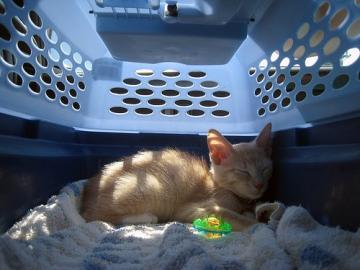
Hemorrhoids of cats and cats: causes and treatment
Hemorrhoids are an unpleasant disease caused by deformation of blood vessels in the rectum. It is familiar not only to people, but also to animals. Even a small bump in the anus can significantly reduce the quality of life of a pet and cause him discomfort when emptying his intestines. How to understand that a cat has hemorrhoids, and how to act in this case?
It would seem that in pets moving on four legs, the center of gravity is located at the chest and they should not suffer from hemorrhoids. However, this disease also occurs in cats, although relatively rarely.
Contents
Causes of hemorrhoids
The main cause of this disease in cats and kittens is a violation of blood flow in the rectum, which causes inflammation. This happens for the following reasons:
- infection with worms and other parasites,
- tumors in the gastrointestinal tract
- interruptions in the work of the intestines,
- prolonged constipation,
- malnutrition,
- dehydration,
- too frequent pregnancies in a cat or difficult childbirth,
- sedentary or, conversely, too active lifestyle,
- inflammatory bowel disease,
- obesity,
- hormonal disruptions,
- cystitis and other diseases of the urinary system.
In addition, hemorrhoids are inherited, so if possible, you should study the medical history of your pet’s parents.
Symptoms and Diagnosis
Hemorrhoids develop in stages, and at first it is difficult to notice the signs of the disease. Only small changes in a pet’s behavior can indicate that it is sick. Among them:
- The cat becomes restless, may lose its appetite. At this point, the hemorrhoid is just beginning to form inside the rectum.
- The bump, swollen with blood, falls out. Its shape becomes conical. The cat’s gait changes, it begins to spread its paws wide when walking and avoid visiting tray
- The bump turns into an ulcer that bleeds and gradually grows. When emptying the intestines, the animal experiences pain, and blood is present in the excrement.
Treatment of hemorrhoids in cats is different from the treatment of “human”. At the first signs of the disease, you should consult a specialist. Attempts to treat on their own can only aggravate the situation and cause complications.
Hemorrhoid treatment and home care
After examining and diagnosing the disease, the veterinarian will prescribe medications and a therapeutic diet. Early treatment for hemorrhoids in cats includes:
- selection of suitable food;
- providing the cat with enough water;
- thorough hygiene of the anal passage – washing 2-3 times daily with warm water;
- using petroleum jelly to facilitate bowel movements;
- the use of antiseptic ointments or suppositories prescribed by a specialist.
Hemorrhoids in a cat at the last stage are difficult to treat with medication, so a veterinarian may prescribe surgery. In this case, after the operation, it is necessary to limit the activity of the cat, compensate for the lack of vitamins and apply the prescribed remedies for the speedy healing of wounds.
Preventive measures
Prevention of hemorrhoids should be aimed at eliminating the factors that provoke the disease. First of all, you need to choose a quality cat food that is suitable for her age, health characteristics and activity level. It is important that the pet always has access to clean water, especially if its diet does not include wet food. If a cat drinks a little you should understand the reasons – perhaps it is better to remove bowls of water from the place of eating or purchase a special drinking fountain.
It is also necessary to undergo timely examinations with a veterinarian, regularly deworm and monitor the weight of the animal. At the first signs of illness in a cat, it is important to immediately contact the clinic, because most diseases are much easier to cure in the initial stages.
See also:
- What diseases can you catch from a cat?
- Feline immunodeficiency virus: causes, symptoms, prognosis
- The most common cat diseases: symptoms and treatment





